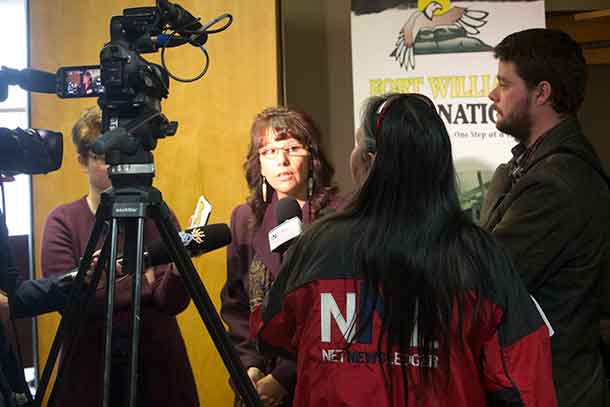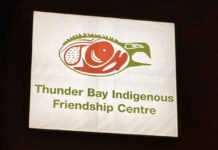THUNDER BAY – Since time immemorial, Indigenous peoples have engaged in kinship relationships and formed alliances, confederations and networks of relatives. Aboriginal peoples have ceremonies to adopt adult relatives with the intention of connecting in kinship to other peoples, extending circles of community, commerce and goodwill. Making relatives is a sacred and significant obligation taken seriously by Indigenous peoples. Obligations and long-term consequences require forethought and contemplation joined with prayer and ceremony to form new kinship relationships and to renew those relationships at regular intervals.
When the first trading posts were established in North America by Europeans, they were invited into the kinship and commerce networks of Aboriginal peoples. The newcomers learned and followed the protocols of gift-giving and congenial relationships expected in trade interactions and social events.
In 1670, the English Hudson’s Bay Company was founded and relied on strong positive relationships with Aboriginal peoples willing to bring furs to the trading posts. The French and the Dutch also engaged in trade relationships and networks dealing in firearms, steel knives and other metal utensils, cloth and other goods in exchange for all manners of furs and hides supplied by entrepreneurial Indigenous men and women.
Beginning in 1701 until 1923, the British Crown and later Canada entered into 70 recognized treaties with First Nations to acquire lands for settlement, engage in commercial relations and seek a common peace. From the Indigenous perspectives, the promises made by the British Crown and Canadian governmental officials were promises of kinship and alliance. Ceremonial protocols were followed by Indigenous leaders to honour the promises of peace and friendship.
Each and every treaty entered into continues to be relevant to the contemporary legal, political, economic and geographical rights of the First Nation party (or parties) and the Crown on behalf of Canada (including the provinces, territories and citizens of Canada).
First Nation leaders pledged that their treaty promises would be upheld through each succeeding generation and bound themselves through sacred ceremonies under the highest law, referred to as “natural law.” Kinship terms were employed referring to the father in England and joining together with the newcomers in relationship. By joining in the sacred pipe ceremony, only honest dealings and words were to be spoken and the spiritual powers were called upon to bless and approve of the proceedings. Through treaties, First Nations welcomed in permanent European neighbours into First Nation homelands to live together and abide by promises of peace, friendship and resource sharing.
Oral traditions evidence the governance and values expected in alliances between Indigenous peoples in North America. One of the most well-known is the Great Law of Peace uniting five First Nations through the symbol of planting a pine tree with the weapons of war buried beneath. This Great Law of Peace came through the vision and dedication of the prophet Dekanawida and was embraced over time by the Onondaga, Mohawk, Oneida, Cayuga and Seneca Nations. Another example comes from the Anishnaabe and Haudenosaunee understanding of resource sharing and is encapsulated in their 1701 mutual agreement referred to as The Dish with One Spoon based on principles flowing from the Great Law of Peace. The shared territory is referred to as the common dish or bowl that the peoples would sustain themselves from and the spoon represented the utensil used would not be a knife to cut or cause injury.
In the Dakota/Lakota/Nakota traditions, we speak of ourselves traditionally as the Oceti Sakowin, the Seven Council Fires. In our language, we are the Dakota/Lakota/Nakota which is translated as the “allies” or the “lovers of peace” rather than the externally imposed moniker “Sioux.”
During a great time of war and massacres in the late 1800s, a Sisseton-Wahpeton Dakota woman known as Tail Feather Woman, Wiyaka Sinte Winyan (from the eagle’s tail) had a vision of the big drum and was given songs to accompany this gift of peace, unity and healing.
After escaping the U.S. cavalry, she journeyed to a Dakota village and shared her vision. From there, several families travelled with her to the Three Fires Confederacy of the Ojibwa, Ottawa and Potawatomi. Her vision of unity and healing through the big drum continued to spread through First Nations and is still honoured today in public and private ceremonies and pow wows.
While Indigenous peoples have been dehumanized and cast as hostile and warlike, the truth is that we are very spiritually based peoples in the Western Hemisphere who seek alliance and kinship with others. When entering into agreements or transactions with each other, we acknowledge our kinship. This acknowledgement leads to commonly understood standards of conduct based on our spiritual beliefs and teaching.
In cross-cultural interactions, such as treaty-making, it is necessary to understand the context for each side entering into the treaty. Thus, expert witnesses, elders recounting oral histories, songs, drawings and other evidence of the Indigenous intent and context are crucial to proper interpretation of any treaty term. As explained in R v. Badger [1996] 1 S.C.R. 771, special rules of interpretation must be employed for treaties entered into with Aboriginal peoples to determine the intent of each party: “Treaties and statutes relating to Indians should be liberally construed and any uncertainties, ambiguities or doubtful expressions should be resolved in favour of the Indians. In addition, when considering a treaty, a court must take into account the context in which the treaties were negotiated, concluded and committed to writing. The treaties, as written documents, recorded an agreement that had already been reached orally and they did not always record the full extent of the oral agreement” (para. 52).
Further, Justice Cory stated that the “honour of the Crown” standard must be applied for Crown-Aboriginal treaties in the same case: “… the honour of the Crown is always at stake in its dealing with Indian people. Interpretations of treaties and statutory provisions which have an impact upon treaty or aboriginal rights must be approached in a manner which maintains the integrity of the Crown. It is always assumed that the Crown intends to fulfil its promises. No appearance of “sharp dealing” will be sanctioned” (para. 41).
In December 2018, the First Nations who entered into the Robinson-Huron and Robinson-Superior Treaties of 1850 received a favourable ruling by the Ontario Superior Court interpreting the $4 annuity term to require escalation and upward adjustment due to resource utilization over the 169 years of the treaty relationship. As Ontario has filed a notice of appeal on Jan. 21, 2019, it will be seen whether the sacred promises and kinship between the Crown and the 21 First Nations in Northern Ontario will be honoured.
Angelique W. EagleWoman, (Wambdi A. Was’teWinyan), is a law professor, legal scholar and has served as a pro tempore tribal judge in four Tribal Court systems. She is of the Sisseton-Wahpeton Dakota Oyate. Follow her @ProfEagleWoman (Editor’s Note: EagleWoman is currently engaged in a constructive dismissal and racial discrimination suit against Lakehead University, where she served as dean of law from May 2016 until April 2018. The allegations against Lakehead University have not been proven in court.)
Previously published by The Lawyer’s Daily a division of LexisNexis Canada.







